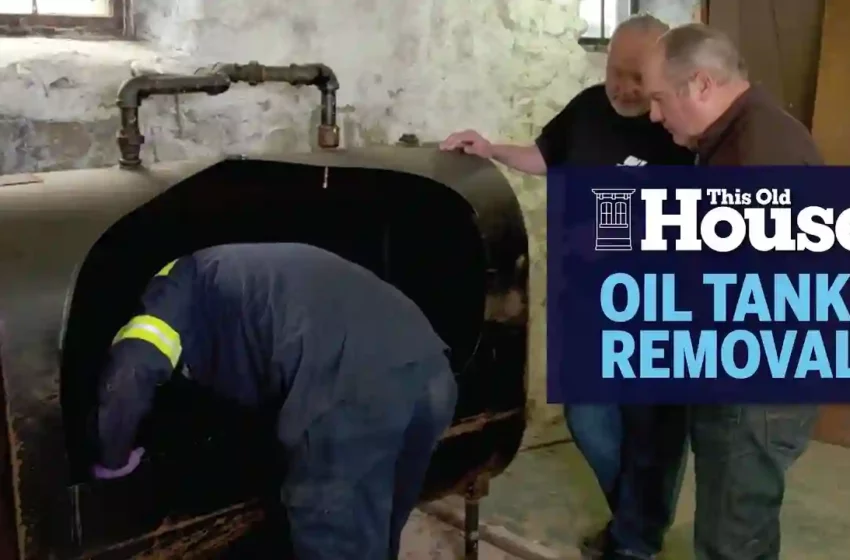
From Buried Treasure to Liability: Oil Tank Removal Essentials
Buried beneath the foundations of countless homes lies a hidden relic of the past – oil tanks that were once considered treasures for heating and fuel convenience. However, as these tanks age, they transform from assets into potential liabilities. The process of oil tank removal becomes essential to prevent environmental hazards, comply with regulations, and safeguard both property values and the surrounding ecosystem. In this article, we explore the essentials of oil tank removal, shedding light on the journey from buried treasure to potential liability.
1.The Aging Dilemma:
Oil tanks, often buried underground for decades, eventually succumb to the relentless forces of time and nature. Corrosion, rust, and structural deterioration become inevitable, leading to potential leaks that can contaminate soil and groundwater. Recognizing the aging dilemma is the first step in understanding the urgency of oil tank removal. Timely action can prevent the transformation of a once-hidden asset into a costly liability.
2.Environmental and Health Concerns:
Leaking oil tanks pose significant environmental and health risks. Oil spills can contaminate soil, water, and air, leading to long-term ecological damage. Moreover, exposure to oil and its byproducts can have adverse effects on human health, causing respiratory issues and other health complications. Addressing these concerns requires a proactive approach, emphasizing the importance of oil tank removal as an essential step in maintaining a healthy living environment.
3.Regulatory Compliance:
Local and state authorities have stringent regulations governing the installation, maintenance, and removal of underground storage tanks, including oil tanks. Non-compliance with these regulations can result in legal consequences, fines, and complications in property transactions. Understanding and adhering to regulatory requirements are essential aspects of oil tank removal, transforming the process from a legal obligation into a responsible and environmentally conscious action.
4.Professional Expertise:
Oil tank removal is a complex task that demands professional expertise. Certified tank removal experts possess the knowledge, experience, and specialized equipment necessary to execute the process safely and efficiently. Attempting to remove an oil tank without professional assistance not only poses risks to the property and the environment but can also lead to legal consequences. Entrusting the task to professionals ensures compliance with regulations and minimizes the potential for accidents or damage.
5.Comprehensive Site Assessment:
Before embarking on oil tank removal, a comprehensive site assessment is crucial. This involves locating the tank, evaluating its condition, and determining the potential environmental impact. Soil and groundwater testing may be necessary to identify any contamination. A thorough assessment guides the removal process, providing insights into the scope of the project and any remediation measures required.
6.Safe Tank Pumping and Cleaning:
The actual removal process begins with the safe pumping and cleaning of the tank. Removing any remaining oil and thoroughly cleaning the tank’s interior minimizes the risk of spills during extraction. Proper disposal of the extracted oil is essential to prevent environmental contamination, marking a key step in the transformation of the buried treasure into a responsibly managed liability.
7.Excavation and Removal:
Excavation is a critical phase in oil tank removal. The area surrounding the tank is carefully excavated to expose it fully, allowing for a meticulous inspection. Specialized equipment is then used to lift the tank from its underground location. Precision is paramount during this step to avoid damage to the tank and surrounding structures. The successful excavation and removal signify the elimination of the potential liability from the property.
8.Environmental Remediation:
If soil or groundwater contamination is detected during the removal process, environmental remediation becomes necessary. Remediation measures may include the removal and replacement of contaminated soil or advanced treatments for groundwater. Thorough documentation of these remediation efforts is crucial for regulatory compliance and ensures that the environmental impact is effectively mitigated.
9.Documentation for Compliance:
The final step in the oil tank removal process involves comprehensive documentation. A detailed report outlining the entire removal process, environmental assessments, and any remediation activities is provided to the homeowner. This documentation is essential for proving compliance with regulations, maintaining a record of responsible environmental stewardship, and facilitating future property transactions.
Conclusion:
From buried treasure to potential liability, oil tanks undergo a transformation that necessitates careful consideration and responsible action. Recognizing the aging dilemma, understanding environmental and health concerns, complying with regulations, seeking professional expertise, and conducting a comprehensive site assessment are all essential elements of the oil tank removal process. By adhering to these essentials, homeowners can ensure the safe and environmentally responsible removal of aging oil tanks, preserving the integrity of their properties and contributing to the well-being of the surrounding ecosystem.
